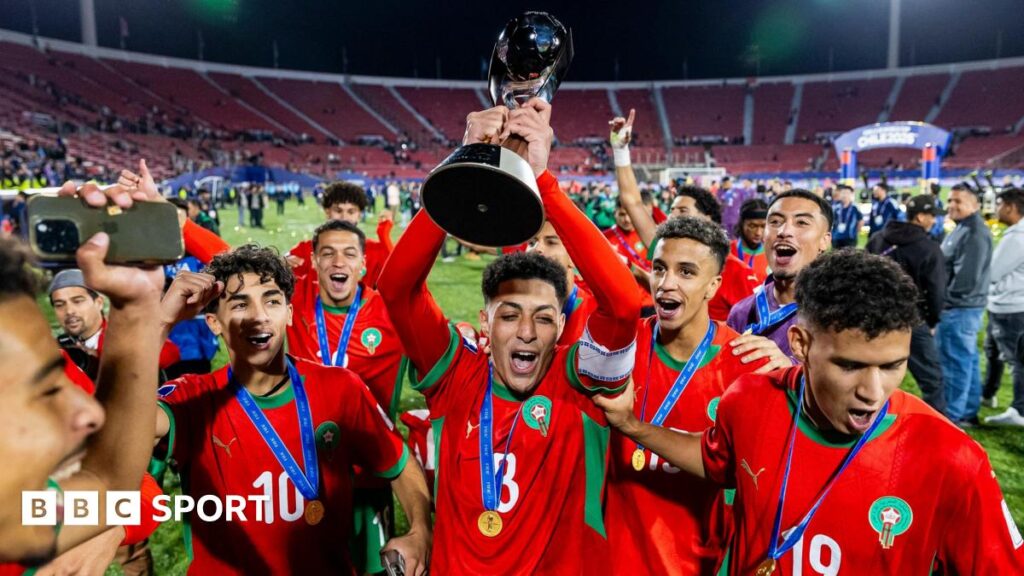The rise of Moroccan football has been a long-term project for King Mohammed VI and the FRMF.
The king first discussed his plan to use football as a tool for social and economic development in 2008, before opening an academy in 2009 and a $65m (£48.5m) training facility near the capital Rabat in 2019 – both of which bear his name.
Five of the players who started the U20 World Cup final attended the academy, as did the likes of Marseille centre-back Nayef Aguerd, Girona midfielder Azzedine Ounahi and Fenerbahce striker Youssef En-Nesyri – all of whom played a part in the Atlas Lions’ historic run to the semi-finals of the 2022 Fifa World Cup in Qatar.
“We can’t overlook the major role played by the Mohammed VI Football Academy, a pioneer in this field, where they’ve done remarkable work with young players,” Fathi Jamal, the director of technical development at the FRMF, told Fifa.com., external
The training facility boasts eight full-size pitches, gym and medical facilities, an Olympic-sized swimming pool and a 5-star hotel among its amenities.
Meanwhile, the federation has set up its own regional training centres, invested in 7,000 amateur pitches, and looked to modernise its technical staff, emphasising the importance of training local coaches.
Vast sums have also been spent on redeveloping and building stadiums to stage the 2025 Afcon and co-host the 2030 Fifa World Cup – with the total costs reported as $5bn (£3.7bn).
“We are ambitious,” said the spokesperson with knowledge of the FRMF’s plans.
“There is more work to do, but we are in a good direction. Afcon (2025) will be even more exciting.”
However, recent Gen Z protests displayed anger at the sums spent on football with calls for money to be channelled into education, healthcare, housing, transport and job creation instead.
On Sunday, ahead of the U20 World Cup final, the royal palace released a statement promising to allocate 140 billion dirhams ($15bn, £11.2bn) in the 2026 budget to health and education, a 16% increase on last year.

